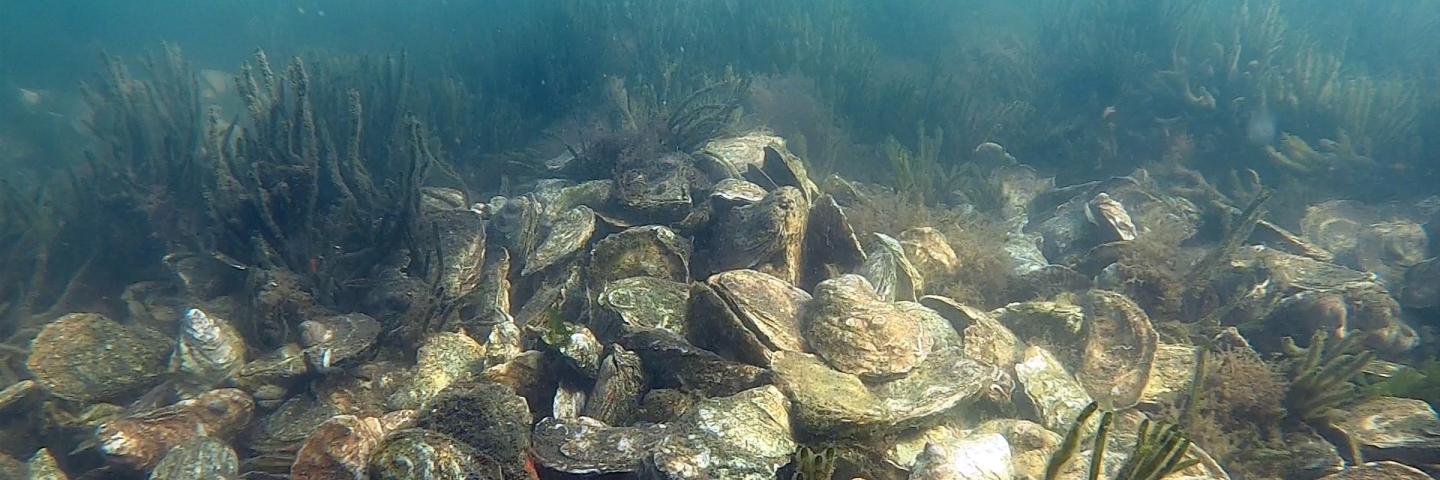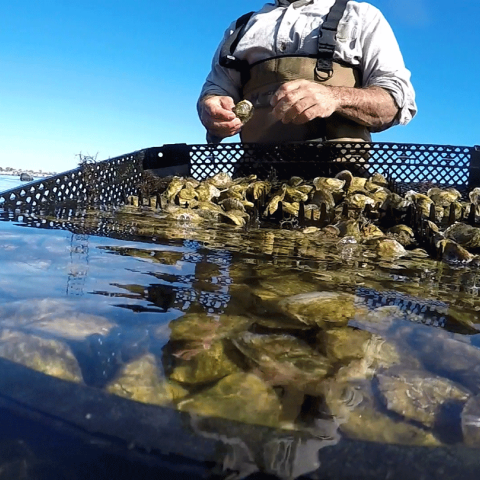
Applicability
Is the application for restoration with LARGE oysters; AND from an applicant that has actively managed a commercial oyster growing operation for the past two consecutive years, AND are the restoration site and farm in the same bio-security zone; AND is the applicant willing to have a random inspection of their restoration bags AND THE PRODUCER SUCCESSFULLY IMPLEMENTED REEF RESTORATION in the past?
- YES — Points: 0
- NO — Points: 0
Category Question
Select the bio-security zone for your project: (Planners to review the bio-security layer in CD against their project location.) Select only ONE. APPLICATIONS WILL BE SELECTED IN RANKING ORDER AND BASED ON AVAILABILITY OF FUNDS. NOT ALL BIO-ZONES MAY MOVE FORWARD.
- Winnie — Points: 0
- Potter — Points: 0
- Otherwise - No Site Available — Points: 0
Program Questions
- If the applicant self-certified as a Beginning Farmer Rancher (BFR), how many years have they been farming? Choose only ONE response.
- 0-3 — Points: 6
- 4-6 — Points: 8
- 7-10 — Points: 10
- Not Applicable — Points: 0
- Did the applicant self-certify as a Veteran Farmer or Rancher (VFR)?
- YES — Points: 10
- NO — Points: 0
- Did the applicant self-certify as a Limited Resource Farmer or Rancher (LFR)?
- YES — Points: 10
- NO — Points: 0
- Did the applicant self-certify as a Socially Disadvantaged Farmer or Rancher (SDFR)?
- YES — Points: 10
- NO — Points: 0
- At what point was the application supplied to NRCS staff? Points are based on the application date as applied in ProTracts. Choose only ONE answer.
- Deferred FY 2023 application — Points: 17
- Timeframe A: applications submitted prior to 10/7/2022 (this does NOT include deferred 2023 applications) — Points: 15
- Timeframe B: 10/8 -11/4 — Points: 12
- Timeframe C: 11/5 -12/2 — Points: 10
- Timeframe D: 12/3-12/30 — Points: 8
- Timeframe E: 12/31-1/27 — Points: 6
- Timeframe F: 1/28-2/23 — Points: 4
- Not applicable — Points: 0
- If applicant has had prior completed oyster contracts during the past 6 consecutive years (2017-2023), did they demonstrate success in the total number of deployed oysters during the 3 highest performing years? (Rounded at the nearest 1000 oysters.) SELECT ONLY ONE success level, as applicable.
- The average number of oysters deployed was greater than 275,000 oysters per year during 3 of the 3 highest performing years out of 6 years of the previously completed practice — Points: 73
- The average number of oysters deployed was greater than 275,000 oysters per year during 2 of the 3 highest performing years out of 6 years of the previously completed practice — Points: 61
- The average number of oysters deployed was greater than 275,000 oysters per year during 1 of the 3 highest performing years out of 6 years of the previously completed practice — Points: 50
- The average number of oysters deployed was within the range of 250,000 - 275,000 during the 3 of the 3 highest performing years out of 6 years of the previously completed practice Points: 40
- The average number of oysters deployed was within the range of 250,000 - 275,000 during the 2 of the 3 highest performing years out of 6 years of the previously completed practice — Points: 31
- The average number of oysters deployed was within the range of 250,000 - 275,000 during the 1 of the 3 highest performing years out of 6 years of the previously completed practice — Points: 23
- The average number of oysters deployed was at least the target (225,000 oysters per year) and less than 250,000 during the 3 of the 3 highest performing years out of 6 years of the previously completed practice — Points: 16
- The average number of oysters deployed was at least the target (225,000 oysters per year) and less than 250,000 during the 2 of the 3 highest performing years out of 6 years of the previously completed practice — Points: 10
- The average number of oysters deployed was at least the target (225,000 oysters per year) and less than 250,000 during the 1 of the 3 highest performing years out of 6 years of the previously completed practice — Points: 5
- Not Applicable — Points: 0
- If applicant has had prior completed oyster contracts during past 6 consecutive years (2017-2023), did they demonstrate success with regards to the size (oyster height) of oysters grown for deployment during the 3 highest performing years? (rounded to the nearest 100 oysters per size bin)? SELECT ONLY ONE success level, as applicable.
- The greatest proportion of oysters deployed during 3 out of 3 of the highest 3 years were at least 1 inch in size — Points: 45
- The greatest proportion of oysters deployed during 2 out of 3 of the highest 3 years were at least 1 inch in size — Points: 35
- The greatest proportion of oysters deployed during 1 out of 3 of the highest 3 years were at least 1 inch in size — Points: 26
- The greatest proportion of oysters deployed during 3 out of 3 of the highest 3 years were greater than the minimum size threshold (0.5 inches), but less than 1 inch in size — Points: 18
- The greatest proportion of oysters deployed during 2 out of 3 of the highest 3 years were greater than the minimum size threshold (0.5 inches), but less than 1 inch in size — Points: 11
- The greatest proportion of oysters deployed during 1 out of 3 of the highest 3 years were greater than the minimum size threshold (0.5 inches), but less than 1 inch in size — Points: 5
- Not Applicable — Points: 0
- Participant provided a grow-out plan/overwinter plan for the oysters to minimize mortality, demonstrating they have the minimum space and gear required to accommodate at least 5-6 cu. yds. of spat on shell (300 bags) on their own lease?
- Yes — Points: 25
- No — Points: 0
- In previous oyster restorations, the participant did not meet the target oyster number, but did meet the minimum threshold (80% of target) and was allowed to deploy?
- Yes — Points: -50
- No — Points: 0
- In last two years of oyster EQIP contract, the participant did not meet the program requirements (i.e. contract violation) OR was NOT allowed to deploy (i.e. not meeting practice implementation requirements or specifications)?
- Yes — Points: -200
- No — Points: 0
Resource Questions
- Is the participant willing to use preferred lineage(s) for the oyster restoration? Choose ONE response. Note: planner must notify participant that if they answer "yes", not meeting this criterion will be considered a violation of the contract.
- Yes — Points: 30
- NO — Points: 0
- Is the participant willing to use a higher percentage of oyster shell in the bags used to set larvae? Note: planner must notify participant that if they answer "yes", not meeting this criteria will be considered a violation of the contract.
- Participant will use 75-100% oyster shells in the bags used to set larvae — Points: 50
- Participant will use 50-75% oyster shells in the bags used to set larvae — Points: 25
- Participant is NOT interested in participating under this criteria — Points: 0
- Is participant willing to use a higher percentage of oyster shell in cultch used to build reef base? Note: planner must notify participant that if they answer "yes", not meeting this criterion will be considered a violation of the contract.
- Participant will use 76-100% oyster shells in the cultch? — Points: 50
- Participant will use 50-75% oyster shells in cultch? — Points: 25
- Participant is NOT interested in participating under this criterion — Points: 0
- In the last seven years, has the participant partnered with RI DEM DMF, URI, RWU, or TNC on research or adaptive management activities focusing on genetic diversity or specific lineage performance in restoration planning? This does NOT apply to compliance or USDA pathology monitoring.
- YES — Points: 10
- NO — Points: 0
- At the time of application (FY2024), is the participant able to show proof of having had a Commercial Fishing Vessel Dockside Safety Exam (inspection) in the form of a certificate and/or a decal affixed to the vessel that has been performed in the year of NRCS application, OR an inspection is planned for the year of oyster deployment, OR both?
- Participant has a current/non-expired Commercial Fishing Vessel Dockside Safety Certification, and agrees to maintain a current certification throughout the life of the EQIP contract — Points: 60
- Participant will obtain a Commercial Fishing Vessel Dockside Safety Certification prior to June 1 of year of deployment, and this certification will be maintained throughout the life of the EQIP contract — Points: 30
- Participant has a current/non-expired Commercial Fishing Vessel Dockside Safety Certification but cannot commit to maintaining this certification throughout the life of the EQIP contract — Points: 5
- Participant does not currently have and is not interested in obtaining a Commercial Fishing Vessel Dockside Safety Certification — Points: 0
Additional Information
Environmental Quality Incentives Program - Rhode Island
The Environmental Quality Incentives Program (EQIP) provides financial and technical assistance to Rhode Island agricultural producers and non-industrial forest managers to address natural resource concerns in the Ocean State.
Learn MoreHistorically Underserved Farmers and Ranchers
The Agriculture Improvement Act of 2018 (2018 Farm Bill) includes provisions that address the unique circumstances and concerns of socially disadvantaged, beginning, limited resource, and veteran farmers and ranchers (“historically underserved producers”).
Learn More

